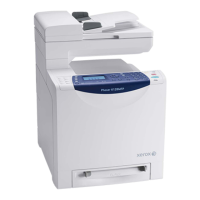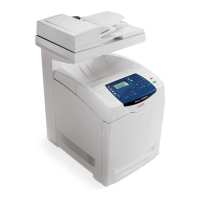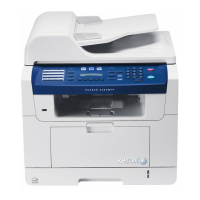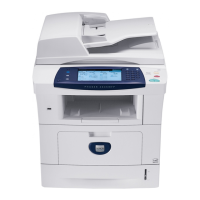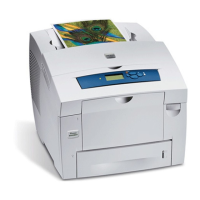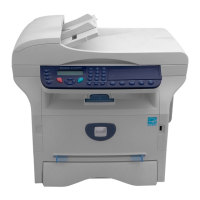5-2 Phaser 6121MFP Service Manual
Print-Quality Troubleshooting
Print-Quality Problems Overview
Print-quality defects can be attributed to printer components, consumables,
media, internal software, external software applications, and environmental
conditions. To successfully troubleshoot print-quality problems, eliminate as many
variables as possible. The first step is to generate prints using information pages
embedded in the printer on laser paper from the approved media list. Refer to
“Media and Tray Specifications” on page 1-15 for supported and specialty media
that have been tested and approved for use in the Phaser 6121MFP. Use paper
from a fresh ream that is acclimated to room temperature and humidity.
If the print-quality defect is still present when printing on approved media from an
unopened ream of paper, then investigate software applications and
environmental conditions.
Determine the temperature and humidity under which the printer is operating.
Compare this to the “Environmental Specifications” on page 1-14. Extreme
temperature and humidity can adversely affect print quality.
When analyzing a print-quality defect, first determine if the defect occurs in all
colors or only one color and if it is repeating or a random occurrence.
Defects Associated with Specific Printer Components
Some print-quality problems are associated with specific assemblies. The
xerographic component is listed with the associated print-quality defects. Refer to
the specific print-quality troubleshooting procedure for detail information.
Toner Cartridge
• Light Prints (page 5-10)
• Foggy Background (page 5-12)
• Gradation Reproduction Failure (page 5-20)
• Void Areas and White Spots (page 5-21)
• Colored Spots (page 5-23)
• Uneven Pitch (page 5-29)
• Uneven Density in the Feed Direction (page 5-33)
• Uneven Density in The Scan Direction (page 5-34)
ADF
• Skew (page 5-31)
Scanner
• Blank Copy or Black Copy (page 5-8)
• Light Print (page 5-10)
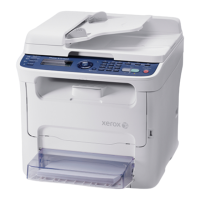
